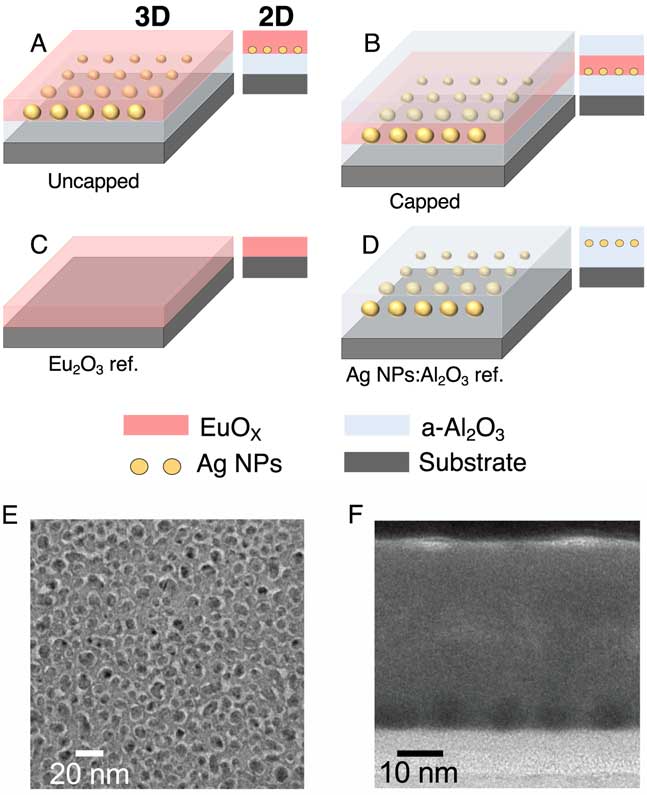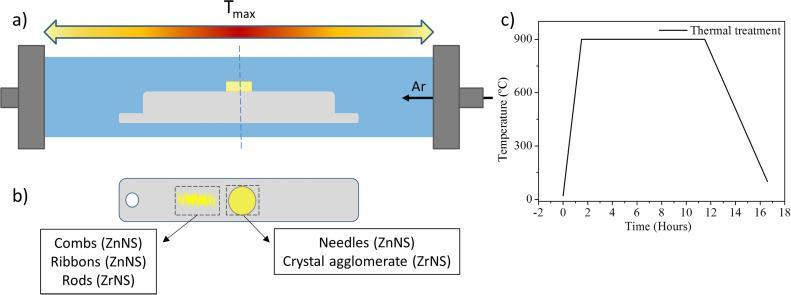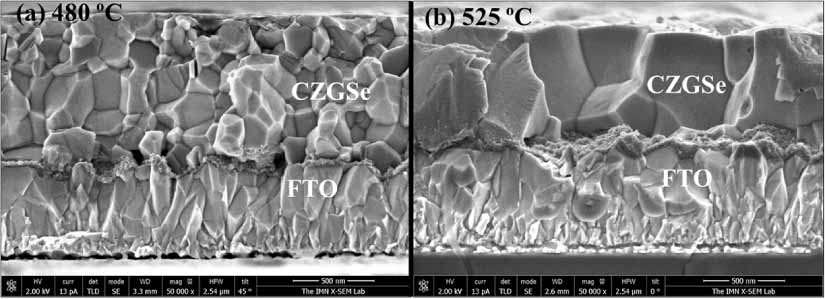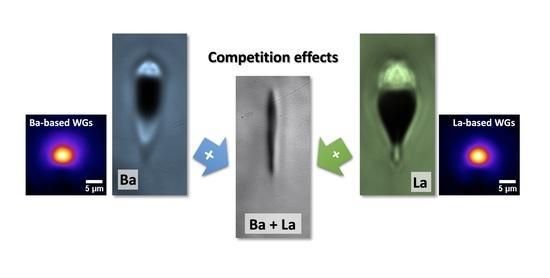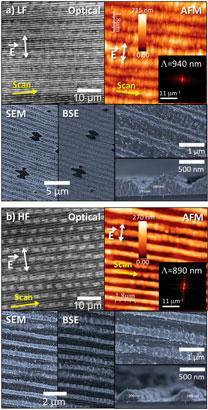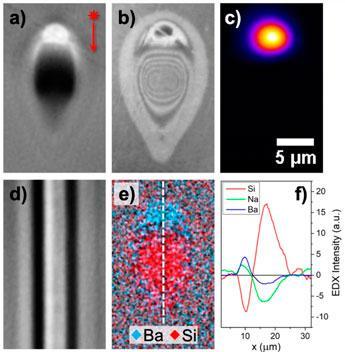2021 Publications
Optical properties of differing nanolayered structures of divalent europium doped barium fluoride thin films synthesized by pulsed laser deposition
Bond, C.W., Jin, Y., Gómez-Rodríguez, P., Nieto-Pinero, E., Leonard, R.L., Gonzalo, J., Serna, R., Petford-Long, A.K., Johnson, J.A.
Optical Materials, 122, art. no. 111796
Abstract
Toward white light emission from plasmonic-luminescent hybrid nanostructures
Gomez-Rodriguez, P., Soria, E., Jin, Y., Caño, A., Llorente, I., Cuadrado, A., Mariscal-Jiménez, A., Petford-Long, A.K., Serna, R., Gonzalo, J.
Nanophotonics, 10 (16), pp. 3995-4007
Abstract
Vapor-solid growth ZnO:ZrO2 micro and nanocomposites
Ariza, R., Dael, M., Sotillo, B., Urbieta, A., Solis, J., Fernández, P.
Journal of Alloys and Compounds, 877, art. no. 160219
Abstract
Deep Silicon Amorphization Induced by Femtosecond Laser Pulses up to the Mid-Infrared
Garcia-Lechuga, M., Casquero, N., Wang, A., Grojo, D., Siegel, J.
Advanced Optical Materials, 9 (17), art. no. 2100400
Abstract
The effect of annealing temperature on Cu2ZnGeSe4 thin films and solar cells grown on transparent substrates
Ruiz-Perona, A., Sánchez, Y., Guc, M., Kodalle, T., Placidi, M., Merino, J.M., Cabello, F., García-Pardo, M., León, M., Caballero, R.
JPhys Materials, 4 (3), art. no. 034009
Abstract
Competition effects during femtosecond laser induced element redistribution in ba-and la-migration based laser written waveguides
Macias-Montero, M., Moreno-Zárate, P., Muñoz, F., Sotillo, B., Garcia-Pardo, M., Serna, R., Fernandez, P., Solis, J.
Materials, 14 (12), art. no. 3185
Abstract
Anisotropic Resistivity Surfaces Produced in ITO Films by Laser-Induced Nanoscale Self-organization
Lopez-Santos, C., Puerto, D., Siegel, J., Macias-Montero, M., Florian, C., Gil-Rostra, J.,López-Flores, V., Borras, A., González-Elipe, A.R., Solis, J.
Advanced Optical Materials, 9 (2), art. no. 2001086
Abstract
Laser‐Empowered Random Metasurfaces for White Light Printed Image Multiplexing
Nathalie Destouches, Nipun Sharma, Marie Vangheluwe, Nicolas Dalloz, Francis Vocanson, Matthieu Bugnet, Mathieu Hébert, Jan Siegel
Advanced Functional Materials (2021).
Abstract
Printed image multiplexing based on the design of metasurfaces has attracted much interest in the past decade. Optical switching between different images displayed directly on the metasurface is performed by altering the parameters of the incident light such as polarization, wavelength, or incidence angle. When using white light, only two-image multiplexing is implemented with polarization switching. Such metasurfaces are made of nanostructures perfectly controlled individually, which provide high-resolution pixels but small images and involve long fabrication processes. Here, it is demonstrated that laser processing of nanocomposites offers a versatile low-cost, high-speed method with large area processing capabilities for controlling the statistical properties of random metasurfaces, allowing up to three-image multiplexing under white light illumination. By independently controlling absorption and interference effects, colors in reflection and transmission can be varied independently yielding two-image multiplexing under white light. Using anisotropy of plasmonic nanoparticles, a third image can be multiplexed and revealed through polarization changes. The design strategy, the fundamental properties, and the versatility of implementation of these laser-empowered random metasurfaces are discussed. The technique, applied on flexible substrate, can find applications in information encryption or functional switchable optical devices, and offers many advantages for visual security and anticounterfeiting.
Femtosecond laser induced thermophoretic writing of waveguides in silicate glass
Manuel Macias-Montero, Francisco Muñoz, Belén Sotillo, Jesús del Hoyo, Rocío Ariza, Paloma Fernandez, Jan Siegel & Javier Solis
Scientific Reports (2021).
Abstract
Here in, the fs-laser induced thermophoretic writing of microstructures in ad-hoc compositionally designed silicate glasses and their application as infrared optical waveguides is reported. The glass modification mechanism mimics the elemental thermal diffusion occurring in basaltic liquids at the Earth’s mantle, but in a much shorter time scale (108 times faster) and over a well-defined micrometric volume. The precise addition of BaO, Na2O and K2O to the silicate glass enables the creation of positive refractive index contrast upon fs-laser irradiation. The influence of the focal volume and the induced temperature gradient is thoroughly analyzed, leading to a variety of structures with refractive index contrasts as high as 2.5 × 10–2. Two independent methods, namely near field measurements and electronic polarizability analysis, confirm the magnitude of the refractive index on the modified regions. Additionally, the functionality of the microstructures as waveguides is further optimized by lowering their propagation losses, enabling their implementation in a wide range of photonic devices.
Quantum nanostructures for plasmonics and high refractive index photonics
Johann Toudert
JPhys Photonics (2021).
Abstract
Although plasmonics and high refractive index photonics have experienced very fast growth thanks to classical physics concepts, there is an increasing interest in harnessing quantum physics concepts for further pushing the frontiers of these fields. In this context, this perspective highlights the importance of some quantum nanostructures for building nanomaterials and metamaterials with enhanced plasmonic and high refractive index properties. Two types of nanostructures displaying quantum properties are considered: (a) quantum confined nanostructures consisting of noble metals or standard semiconductors, (b) nanostructures built from alternative materials whose dielectric function and optical properties are driven by (possibly tailored) giant interband electronic transitions. A special emphasis is made on the potential of this latter type of nanostructures for achieving outstanding effects for applications, such as ultrabroadband light harvesting, giant refractive index, coupling between dielectric, low-loss plasmonic and magnetic properties, compositionally or externally tuneable optical response. Possible future developments to the field are discussed.



